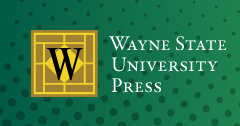Abstract
In this article, I argue that looking and staring, which are typical aspects of Stephen Dwoskin’s experimental, highly personal approach to cinema, contribute to a broader sensory inquiry into conditions of diasporic and disabled (gender) dysphoria. I explore the intersecting relationships between these four “d’s”—Dwoskin, disability, diaspora, and dysphoria—understanding how in recent years the fields of transgender (trans) studies, diaspora studies, and disability studies have demonstrated collective interest in conditions of dysphoria as strategies that negotiate complex embodiment and ethnicity. In doing so, I adopt a hybrid approach to aesthetic modes of self-estrangement and radical interruptions of normative embodiment in Dwoskin’s late films. Adopting what Elliot Evans has described via Eve Kosofsky Sedgwick and Paul B. Preciado as a “universalizing” orientation of cutting-edge trans theory,1 and earlier work by historians of disability and masculinity such as David Serlin,2 I read across these concepts to suggest that the formal and aesthetic structures and contexts of Dwoskin’s late films agitate the boundaries between embodied conceptualizations of diaspora, disability, and dysphoria. This has consequences for Dwoskin’s positioning in wider discourses of experimental filmmaking, both within and beyond Britain where he spent the majority of his adult life, and helps to connect the relationships between his diasporic Jewishness and disability. Thinking expansively, this article examines how expressions of dysphoria, discussed in trans, disabled, and diasporic communities, have the potential to offer, not recuperation or rehabilitation of Dwoskin’s work, but a space to think from that is resistant to the binarist, normative, and exclusionary logics prevailing in British culture at this moment in the twenty-first century.
Recommended Citation
Chamarette, Jenny
(2022)
"Dwoskin: Disability, Diaspora, Dysphoria,"
Jewish Film & New Media: Vol. 10:
Iss.
1, Article 10.
Available at:
https://digitalcommons.wayne.edu/jewishfilm/vol10/iss1/10
